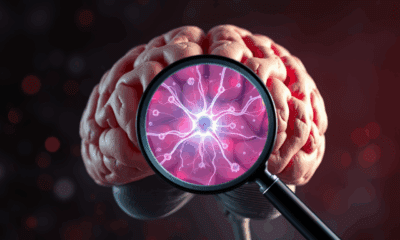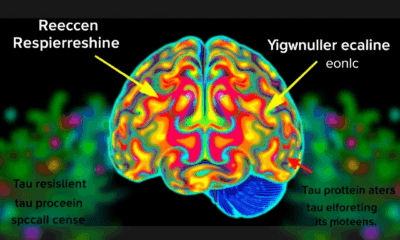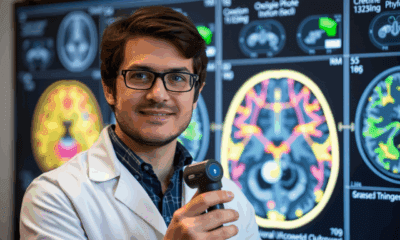While we try to keep things accurate, this content is part of an ongoing experiment and may not always be reliable.
Please double-check important details — we’re not responsible for how the information is used.
Asthma
The Genetic Link to Sedentary Behavior: A Key Factor in Cardiovascular Disease Risk
Although sedentary behavior may be an evolutionarily selected trait, it is still important to try to be physically active, says a new study. Researchers have shown for the first time that genetic predisposition to sedentary behavior is associated with a higher risk of developing the most common cardiovascular diseases. A high genetic predisposition to sedentary behavior can increase the risk of cardiovascular diseases by up to 20%.

Animal Learning and Intelligence
“Breathe with Identity: The Surprising Link Between Your Breath and You”
Scientists have discovered that your breathing pattern is as unique as a fingerprint and it may reveal more than just your identity. Using a 24-hour wearable device, researchers achieved nearly 97% accuracy in identifying people based solely on how they breathe through their nose. Even more intriguingly, these respiratory signatures correlated with traits like anxiety levels, sleep cycles, and body mass index. The findings suggest that breathing isn t just a passive process it might actively shape our mental and emotional well-being, opening up the possibility of using breath training for diagnosis and treatment.
Asthma
Controlling Key Health Risk Factors Can Significantly Reduce Early Death Risk for Those with High Blood Pressure
Controlling blood pressure is not the only way to treat hypertension. A new study identified eight associated risk factors. Each risk factor addressed was associated with a 13% lower risk of premature death. Patients who addressed at least four of these risk factors had no greater risk of an early death than those without high blood pressure.
Air Pollution
One in Ten Asthma Cases Can Be Avoided with a Better Urban Environment
The combination of air pollution, dense urban development and limited green spaces increases the risk of asthma in both children and adults.
-

 Detectors3 months ago
Detectors3 months agoA New Horizon for Vision: How Gold Nanoparticles May Restore People’s Sight
-

 Earth & Climate4 months ago
Earth & Climate4 months agoRetiring Abroad Can Be Lonely Business
-

 Cancer4 months ago
Cancer4 months agoRevolutionizing Quantum Communication: Direct Connections Between Multiple Processors
-

 Agriculture and Food4 months ago
Agriculture and Food4 months ago“A Sustainable Solution: Researchers Create Hybrid Cheese with 25% Pea Protein”
-

 Diseases and Conditions4 months ago
Diseases and Conditions4 months agoReducing Falls Among Elderly Women with Polypharmacy through Exercise Intervention
-

 Chemistry3 months ago
Chemistry3 months ago“Unveiling Hidden Patterns: A New Twist on Interference Phenomena”
-

 Albert Einstein4 months ago
Albert Einstein4 months agoHarnessing Water Waves: A Breakthrough in Controlling Floating Objects
-

 Earth & Climate4 months ago
Earth & Climate4 months agoHousehold Electricity Three Times More Expensive Than Upcoming ‘Eco-Friendly’ Aviation E-Fuels, Study Reveals





























